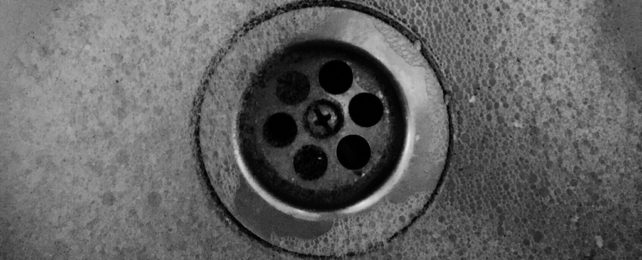Sink drains and plumbing are generally unpleasant places, at least from a human perspective.
If you're a fungus, though, you may feel differently. In fact, one reason we're often repulsed by sinks – along with dirty sponges and other sink paraphernalia – is precisely because they're such great habitats for unsavory microbes.
In a new study by researchers from the University of Reading and UK Center for Ecology & Hydrology, scientists took a deep dive into this murky ecosystem, investigating more than 250 "restroom sink fungal communities" on a university campus.
Led by University of Reading bioinformatician Soon Gweon, the research team collected samples from restroom sink drains and P-traps in 20 buildings across the university's main campus.
The researchers used sterile cotton swabs to collect samples from drains and P-traps, recording details on the qualities of each sink that included its location, purpose, gender label for bathrooms, and whether the water flowing down the drain was hot or cold. Extracting DNA from the samples, they used polymerase chain reaction (PCR) amplification and bioinformatic processing to help identify the sinks' microbial residents.
The results showed moldy jungles of fungal diversity, like tiny rainforests in drains.
It may seem obvious that dank places like these would support microbial life, but the mere presence of fungi isn't the main takeaway. These fungal communities are diverse, the researchers report, yet also incredibly similar to each other.
The sinks hosted 375 genera of fungi – the taxonomic rank above species – from an array of classes, orders, and families. The study found fungi representing seven different phyla, the taxonomic rank below kingdom.
Despite high biodiversity within each sink, all the fungal communities showed surprisingly similar taxonomic profiles, the researchers report, meaning the roster and ratio of fungi didn't vary much from sink to sink, or even from building to building.
The researchers note they aren't sure what drives this similarity, but note that the similarity in sink fungi from different restrooms and buildings could reflect "similar usage" by those in the community.
All these sinks are mainly used for handwashing, with many of those making use of the facilities hailing from the broader university population, and any of whom could be exposed to the microbes when they use the sinks.
"We spend 90 percent of our time indoors, so we are exposed to fungi in our homes and workplaces," Gweon says.
"For most people, this isn't a problem, but for those who are immunocompromised, certain fungal species can cause serious infections."
The study suggests sink drains and P-traps aren't just nice places for microbes to live, but could serve as reservoirs for some molds, yeasts, and other fungi, potentially harboring and helping spread species that can sicken humans.
"It isn't a big surprise to find fungi in a warm, wet environment. But sinks and P-traps have thus far been overlooked as potential reservoirs of these microorganisms," Gweon says.
"This could be a really important finding for those who are trying to help immunocompromised people avoid infections by some of the opportunistic pathogens that may be lurking in sinks, such as Fusarium."
Sink drains and pipes offer a unique habitat for fungi in the built environment, Gweon and his colleagues note, thanks to continuous moisture, temporary temperature changes, high pH from detergents, and the potential accumulation of organic matter.
Fungi in sinks also need to be tough, though. They face blasts of hot water, for example, plus variable acidity levels and food availability. Some fungi might exploit detergents in soap as a carbon-rich food source, the researchers suggest.
The most abundant and ubiquitous genus found in the new study was Exophiala, the researchers report, a "black yeast" that includes terrestrial and aquatic species.
"Exophiala species can be considered opportunistic pathogens causing cutaneous and superficial infections," they write. These may not pose a high risk overall, but "fatal systemic infections have been documented."
The study was published in Environmental DNA.
